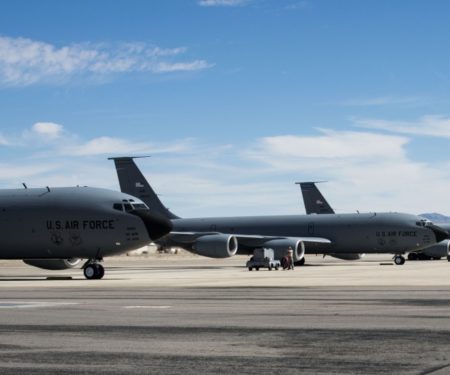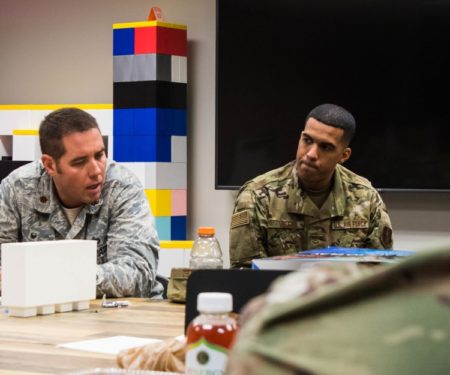Radar Sweep
OPINION: China’s Space Program Is More Military Than You Might Think
“Some are urging the U.S. and China to collaborate in space as a means to dampen great power tension, though the Wolf Amendment has since 2011 effectively barred NASA from such cooperation. The militarized tilt of the Chinese space program complicates these plans. Space planning and directing organizations, the ground infrastructure supporting its space programs, and the taikonauts themselves are all under the purview of the People’s Liberation Army,” writes Taylor A. Lee, an analyst with BluePath Labs, a D.C.-based consulting company, and Peter W. Singer, strategist at New America.
The Number of Major F-35 Flaws is Shrinking, but the Pentagon is Keeping Details of the Problems Under Wraps
As the F-35 program inches its way through operational testing, the number of critical technical deficiencies is slowly dwindling, dropping from 11 critical deficiencies in January to seven in July. However, the exact nature of these problems will remain unknown to the public, even when the deficiency itself is not classified. The F-35 Joint Program Office declined to characterize the fighter jet’s remaining seven critical deficiencies but said in a statement that it has identified and tested fixes for each problem.
NORTHCOM Head To Press DOD Leaders For AI Tools
Gen. Glen VanHerck, the head of U.S. Northern Command, is pushing the Defense Department to rapidly adopt the use of artificial intelligence tools that would give decision-makers earlier, and better, options—not just for defeating an adversary on the battlefield, but for actually avoiding warfare in the first place. In an exclusive interview this week, VanHerck said AI could help military commanders, U.S. diplomats, allies, and partner nations all formulate comprehensive strategies for deterring adversarial global powers, such as Russia and China.
As America Moves Air Defenses From Middle East, Will Local Partners Step Up?
The Pentagon’s decision to pull military hardware out of the Middle East may be driving headlines, but regional experts say the moves do not actually amount to a major strategic shift in the region. However, the moves could lead to local governments investing more heavily in high-end air defense systems that have previously been provided by American forces in the region.
Air Force Nuclear Cruise Missiles to Cost About $29 Billion
The U.S. Air Force’s new nuclear cruise missile will cost at least $29 billion to develop, procure, operate, and sustain, a Pentagon evaluation found. That’s $2 billion more than the service’s estimate, with the major difference stemming from the development and procurement phases for as many as 1,020 of the air-launched missiles, known as the Long-Range Standoff Weapon.
The Marine Corps Just Beat the Air Force and Navy in the Latest Jet Capability Race
While the U.S. Marine Corps says its first squadron of F-35 Joint Strike Fighters is fully equipped and ready for war, the Air Force and Navy need more time to catch up. Marine Fighter Attack Squadron 314 said earlier this month that its fifth-generation F-35C jets have achieved full operational capability. Experts believe that could be because the Marine Corps chose to buy far fewer of the C aircraft than the Navy and Air Force purchased of their variants, letting the Marine Corps reach the operational breakthrough faster.
New ‘Chaos Engineering’ Tool Shared Between DOD Software Factories
The Air Force’s Kessel Run software factory is transitioning to the Navy a tool that it has been developing for the past two years that is designed to emulate persistent enemy attacks on a system. The Navy’s Black Pearl software factory will be the first group outside of Kessel Run to get the tech stack and list of best practices on implementing it. But eventually, the goal is for as many coders to get their hands on it as possible, lead engineer Omar Marrero told FedScoop.
MQ-9 Reaper's Automatic Takeoff, Landing Capability Tested Successfully
The MQ-9 Reaper's automatic takeoff and landing capability has successfully been tested, which officials say could significantly expand the missions it is used for, the Air Force said July 15. Previously, the aircraft was required to land at the airfield of operation, but the aircraft can now divert to other landing locations while aircrew control it via satellite.
Space Force Has High Hopes for New Missile Warning Satellites
The Space Force is pursuing a new generation of satellites and associated ground systems to better detect enemy missiles and provide greater resiliency against counterspace weapons. The Biden administration is boosting funding for the project as the military tries to stay ahead of the evolving threat.
Are you sitting comfortably ... ?
Some 75 years ago, on July 24, 1946, a volunteer from Martin-Baker became the first person outside Germany to eject from an aircraft in flight. Take a look back on the early history and evolution of ejection seats, from their German origins all the way to the F-35.



